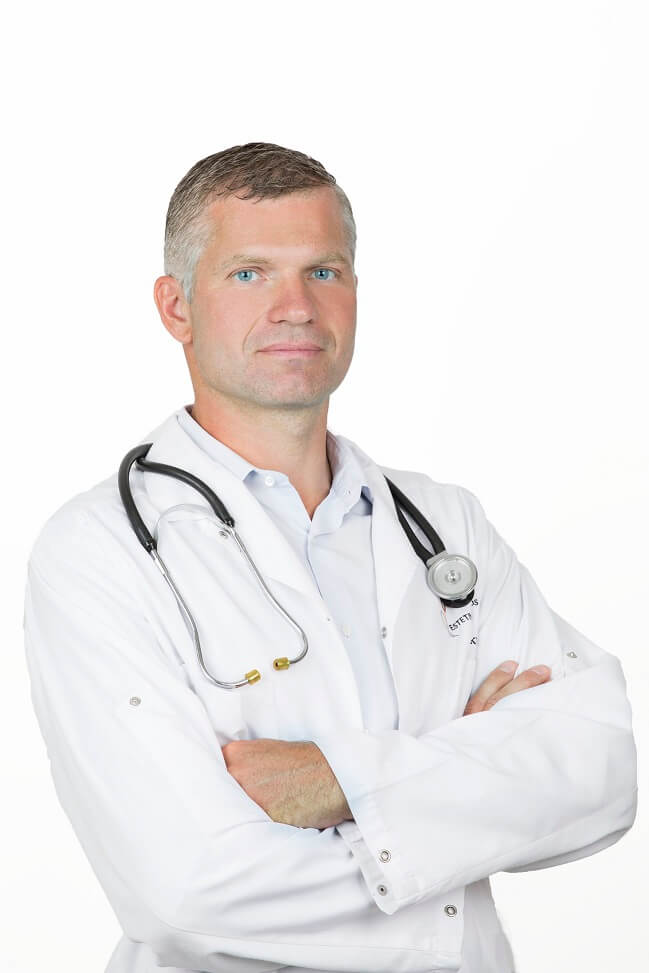Liposuction
Areas that can be well treated by suction lipectomy include the abdomen, flanks, buttocks, thighs, knees, neck, face and some other parts of the body.
Removing body fat using suction has proven to be a safe and effective surgical alternative that can result in a better body contour with minimal scarring. The procedure gives the best result when used to remove localized areas of unwanted fat after someone has reached a desirable weight through diet and exercise.
Except for removing very small amounts of fat, this procedure must be performed under general anesthesia. For smaller cases it can be done as an outpatient procedure. When plans are to remove large amounts, it is safer to stay overnight at our clinic.
Initially the doctor will mark areas for liposuction on your body. Before the surgeon begins the liposuction, the area to be suctioned is infused with large quantities of a special fluid. This is called the tumescent technique. It has been in widespread use for many years and is a great advance to liposuction. It makes it easier for the surgeon to remove the fat and there is less bleeding and postoperative bruising and pain. Patients recover faster and are back to their normal activities sooner than after the older technique.
A small, 2-5 mm incision is made near the area where the fat is to be removed. A thin, blunt-tipped, hollow rod is inserted under the skin and carefully manipulated through the fat tissue. The hollow rod is attached to a high-vacuum hose that sucks out the unwanted fat cells. When the desired fat is removed, the incisions are closed and dressings are applied. The length of the procedure varies depending on how much fat is removed and it takes from 1 to 4 hours.
Patients wear a pressure garment over the suctioned area. This minimizes swelling and discoloration and helps the healing process. In spite of this, there will be some swelling and discoloration. The discoloration subsides in several weeks, but the swelling may take months to disappear.
Following surgery, oral medication will usually control the pain. Patients should drink plenty of fluids the first few days after surgery. Sport drinks containing electrolytes are recommended. Patients can return to near normal activity in about one week, but it may be several weeks before strenuous exercise can be resumed.
As in any operation, complications can occur but their degree and number are relatively small. Occasionally, antibiotics are required for minor infections. The most common problem is waviness or sagging skin, which is caused by irregular fat removal or inadequate skin shrinkage over the newly contoured areas. In some cases, there may be depressions from too much fat removal. Cellulite (dimpling) and other surface irregularities that were present before surgery will still be present afterward.
The best results can be achieved in younger people who have good skin tone; however, many older people may have excellent results if they recognize the limitations of the surgery and have realistic expectations. Sometimes a minor secondary procedure is necessary to achieve desired results.
Depending upon the procedure you may recuperate overnight at our clinic under the care of our nursing staff, return home or stay in the near by hotel.
Examples of this kind of surgeries performed at our clinic can be found in our gallery.
 |
The abdomen, thighs, knees and arms are all good targets for liposuction. Small incisions are made ( 2-5 mm) in natural crease lines if possible and the tumescent fluid is injected in the fat. | ||
| “Love handles” and “saddle bags” are also areas where liposuction can produce excelllent results. |  |
||
 |
The fat is aspirated using specially designed canulas. | ||
| Compression garments are necessary to produce smooth, even results. The garments need to be used for up to 4 weeks following the surgery. You are allowed to take the garments off for brief periods of time to shower. |  |
||
 |
Usually results are obvious right away but over the following 8 to 12 weeks continious improvement will be visible as the swelling diminishes. |
For more information please visit our FAQ section.

